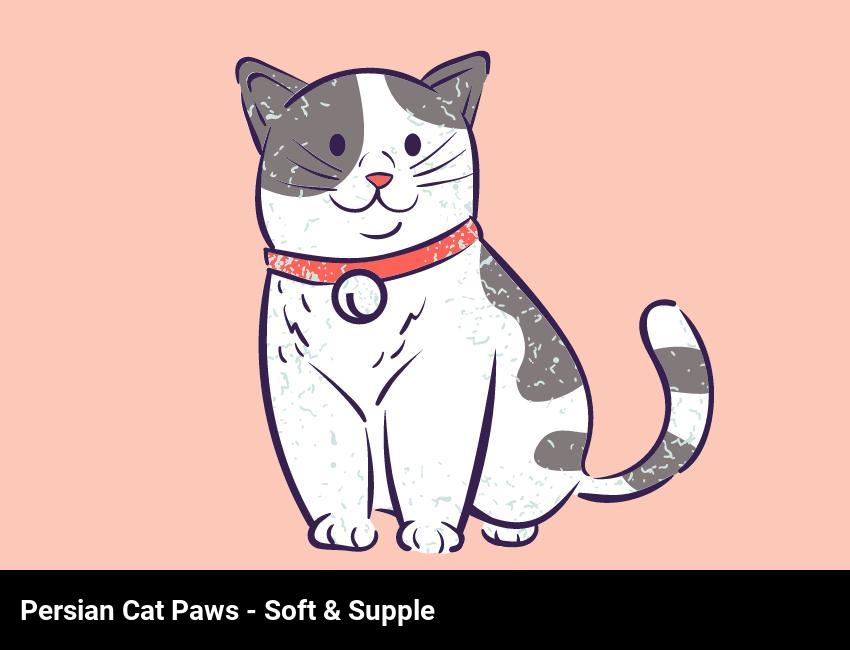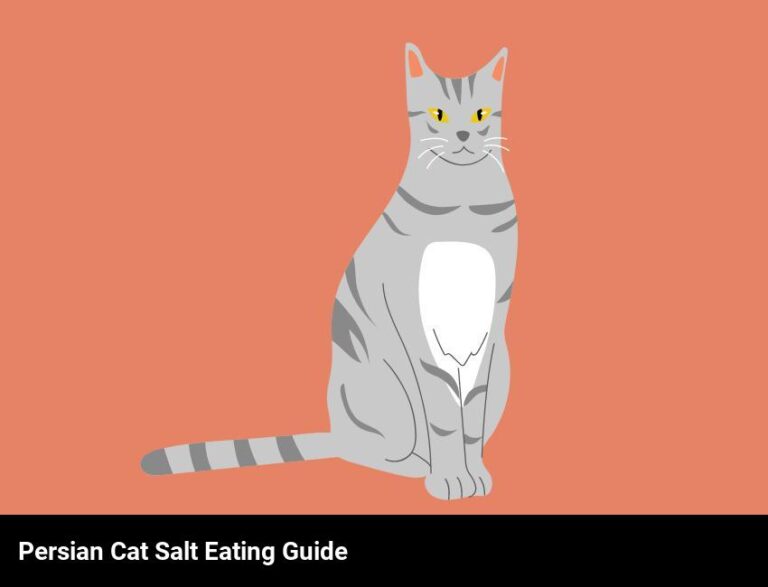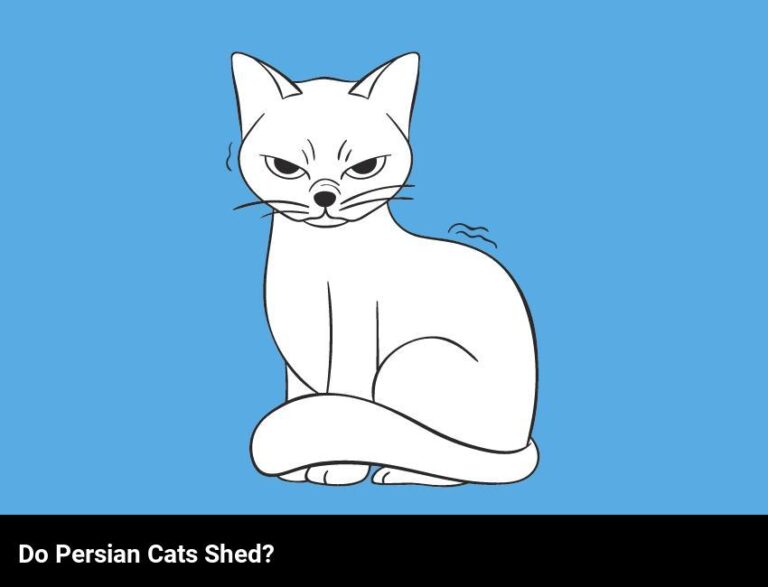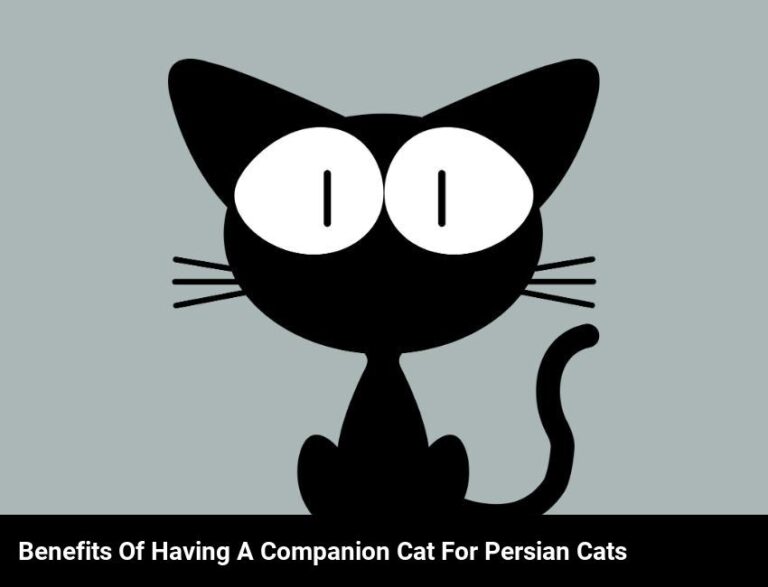Soft And Supple: All About Persian Cat Paws
Persian Cat paws are soft and supple due to their thick fur, which acts as a cushion. This protects them from the cold and helps them grip surfaces when they walk.
As a proud owner of a Persian cat, I have grown to appreciate their soft and supple paws. I remember the first time I touched my Persian cat’s paw, I was amazed at how soft and delicate it felt. I’ve always been curious about why Persian cats have such soft and supple paws, what advantages they have, and if there are any health risks associated with them.
In this blog, I want to explore the world of Persian cat paws and answer all the questions I had. From understanding why they have such soft and supple paws to what types of surfaces their paws can handle, I’m going to share all the knowledge I have. I’m also going to talk about how to care for your Persian cats’ paws and what signs to watch out for to make sure they are healthy.
If you’ve ever wondered why Persian cats have such soft and supple paws, or what special grooming needs they have, this blog is for you. So, buckle up and let’s explore the world of Persian cat paws together.
Why do persian cats have such soft and supple paws?
You may have noticed that your Persian cat’s paws are always soft and supple, and you may be wondering why this is. The answer is quite simple: those cute little paws are designed that way! Persian cats have evolved over time to have incredibly soft and supple paws because they help them to navigate their environment more easily.
Their fur is so thick and luxurious that it often gets in the way of their movement, so soft and supple paws are perfect for helping them to keep their balance. The softness also helps them to grip surfaces more easily, which is why you’ll often see them climbing up furniture or running up walls.
Persian cats also have an extra toe on each paw, which increases their grip further. This extra toe is known as a dewclaw and is the same colour as the rest of their fur, so it’s not always easy to see. It’s also covered in fur to help protect it from wear and tear.
Finally, Persian cats have a special type of paw pad that helps them to move quickly and silently. The paw pads have a very soft texture, which means that they don’t make much noise as they move, making it easier for them to sneak up on their prey.
So, there you have it: if you’re wondering why Persian cats have such soft and supple paws, it’s because their paws are literally designed to help them move more easily.
What are the advantages of having soft and supple paws?
Having soft and supple paws may seem like an insignificant detail, but it is actually very beneficial for Persian cats. Soft and supple paws can enhance a Persian cat’s overall quality of life in many ways.
For starters, soft and supple paws are more comfortable for cats to walk on. That means your Persian cat will be able to move around with greater ease, comfort and agility. Soft and supple paws also provide the necessary grip and traction for cats to walk on slippery surfaces, like hardwood floors and tile.
Soft and supple paws also make it easier for cats to groom themselves. Cats groom themselves by licking their paws, so having supple paws makes it easier for cats to reach all of their fur. This keeps their fur clean and healthy and prevents mats from forming.
Finally, having soft and supple paws is important for a Persian cat’s overall health. Soft and supple paws can help to prevent cracked skin and painful sores, which can occur when paws become dry or damaged. Keeping the paws soft and supple will help to ensure that your Persian cat’s paws stay healthy and comfortable.
In conclusion, soft and supple paws provide a number of benefits for Persian cats. Not only are soft and supple paws more comfortable and easier to groom, they are also important for a cat’s overall health. This is why it is important to take good care of your Persian cat’s paws and keep them soft and supple.
Are there any health risks associated with persian cats’ paws?
Yes, there are a few health risks associated with Persian cats’ paws. These cats are particularly prone to a condition called “paw pad hyperkeratosis”, which causes thickening and dryness of the paw pads. In severe cases, these paw pads can become so thick and dry that they can crack and bleed.
If you notice that your Persian cat’s paw pads are dry or cracked, it is important to take them to the vet right away. They can evaluate the condition and recommend the best course of treatment. If the condition is mild, they may recommend lightly moisturizing the paw pads with a pet-safe balm or ointment. If the condition is more severe, they may prescribe a special ointment or cream to help soften and heal the paw pads.
It is also important to keep your Persian cat’s nails trimmed and to give them monthly “paw-dicures” to help keep their paws soft and supple. This can be done using a pet-safe nail trimmer and a nail file. Make sure to moisturize the paw pads afterwards to help further protect them from damage.
In addition, it is important to make sure that your Persian cat is getting enough exercise. Exercise will help to keep them healthy and help to prevent their paw pads from becoming dry and cracked.
By keeping an eye on your Persian cat’s paw pads, making sure they get regular paw-dicures and enough exercise, you can help to ensure that their paws stay healthy and happy.
What types of surfaces can persian cats’ paws handle?
Do you have a Persian cat? Did you know their paws are very soft and supple? That’s because Persian cats have unique paw pads that are perfect for their daily activities. But what types of surfaces can their paws handle?
Well, the short answer is that Persian cats can handle most surfaces. Their pads are designed to be soft and also quite tough, so they can easily walk on carpet, wood floors, and even a tile floor. The pads cushion their paws and provide them with the extra grip they need to get around.
Additionally, Persian cats can handle any kind of terrain. Whether it’s grass, dirt, sand, or rocks, their paws are designed to withstand the elements. They are also equipped with long nails that help them dig and climb, so they can make their way around any kind of terrain.
Finally, Persian cats also have protective pads on their feet that make them more resistant to cuts, scrapes, and abrasions. This helps them to stay safe, even when they are walking around on rough surfaces.
So, if you have a Persian cat, you don’t have to worry about them being uncomfortable on different surfaces. Their paws are designed to handle most surfaces, so they should be able to get around easily.
How can you care for your persian cats’ paws?
Your Persian cat’s paws are so soft and supple, you’ll want them to stay in tip-top condition for as long as possible. Here’s how you can do that.
First, trim your cat’s nails regularly. Not only will this help keep their paws clean, but it will also prevent them from becoming ingrown or uncomfortable. If you’re not sure how to do it yourself, take them to a vet or groomer.
Next, keep an eye out for any infections or injuries that may occur on their paws. Redness, swelling, or tenderness can all be signs of a problem. If you do see anything like this, take them to the vet right away.
Lastly, it’s important to keep their paws moisturized. You can do this by rubbing a small amount of paw wax or paw balm into their pads. This will help prevent their paws from becoming dry and cracked.
Caring for your Persian cat’s paws is easy. Just remember to trim their nails, be on the lookout for any infections or injuries, and keep their paws moisturized.
Are there any special grooming needs for persian cats’ paws?
Yes! Persian cats have special grooming needs for their paws. As with any other part of the cat’s body, their paws require regular upkeep, and a little extra attention is needed to keep them healthy and soft. Start by brushing your cat’s paws with a soft-bristled brush to get rid of any dirt or mats. This will help keep their paws soft and supple, and will also help prevent any potential infections.
You should also trim your cat’s claws regularly to keep them from getting too long and damaging furniture or walls. Trimming is also important for your cat’s health, as it can help prevent them from accidentally catching their claws on something and potentially causing injury.
Finally, you should also check your cat’s paws for any signs of infection or irritation. If you notice any redness, swelling, or other sign of infection, take your cat to the vet for an examination.
Overall, proper paw care is essential for keeping your Persian cat healthy and happy.
What are the signs of an unhealthy paw on a persian cat?
If you’re a Persian cat owner, chances are you’ve been admiring your cat’s soft and supple paws. But have you ever wondered what signs of an unhealthy paw on a Persian cat look like? It’s important to pay attention to these signs as they can be an indication of a more serious issue.
To start, an unhealthy paw on a Persian cat can be characterized by a lack of fur, which can make their pads appear scaly and dry. This can be caused by an allergic reaction, an infection, or even inadequate nutrition. In addition, you may also notice that their paws are red and inflamed, which can be an indication of an infection or a reaction to certain substances.
Moreover, it’s a good idea to pay attention to your cat’s behavior. If your Persian cat is pawing excessively at their feet or limping, this can be a sign of an unhealthy paw. Additionally, if your cat is refusing to walk or puts minimal effort into walking, this could be a sign that something is wrong with their paw.
Finally, it’s important to note that an unhealthy paw can be caused by a number of factors. From an infection to an allergic reaction to inadequate nutrition, it’s important to pay close attention to your cat’s paws and to contact your vet if you suspect something is wrong. With proper care, you can ensure that your Persian cat’s paws remain healthy and supple.
How can you tell if your persian cat’s paws are healthy?
The health of your Persian cat’s paws is incredibly important. The best way to tell if your cat’s paws are healthy is to take a close look at them. Here are some key things to look out for:
- Color: The color of your cat’s paw pads should be a healthy pink with no discoloration.
- Texture: The paw pads should feel soft and smooth to the touch. If they appear hard, cracked, or scaly, it could be an indication of an underlying health issue.
- Claws: The claws should be short and free of any broken or split tips.
- Nails: The nails should be trimmed evenly and not too long.
- Fur: The fur on the paws should not be matted or clumped together.
If you notice any of these issues, it’s a good idea to contact your veterinarian. They can help diagnose any potential problems and make sure your Persian cat’s paws are as healthy as possible.

Frequently Asked Questions
What activities can persian cats do with their paws?
Persian cats are known for their unique paws which are soft, supple, and delicate. As such, it is important to find activities that are safe for them to do with their paws. Some of the activities Persian cats can enjoy include gentle petting, paw massages, and playing with feather toys. They can also enjoy activities like paw painting and learning how to shake hands! With the proper care, Persian cats can have a lot of fun with their paws.
What kind of paw pads are common among persian cats?
Persian cats often have round, black paw pads. They are typically very soft and supple to the touch, and their fur is usually quite thick around their paws. Persian cats’ paw pads can also have lighter shades of gray or pink, which is another attractive feature.
How can you help keep your persian cat’s paws strong and healthy?
To help keep your Persian cat’s paws strong and healthy, you should regularly check for any signs of soreness, dryness, or infection. Keeping their paws trimmed, free from debris and infection, and moisturized can help keep their paws in top shape. You should also give them plenty of opportunities to stretch and strengthen their paw muscles by providing them with scratching posts. Additionally, make sure your cat is getting plenty of exercise to maintain overall good health.







